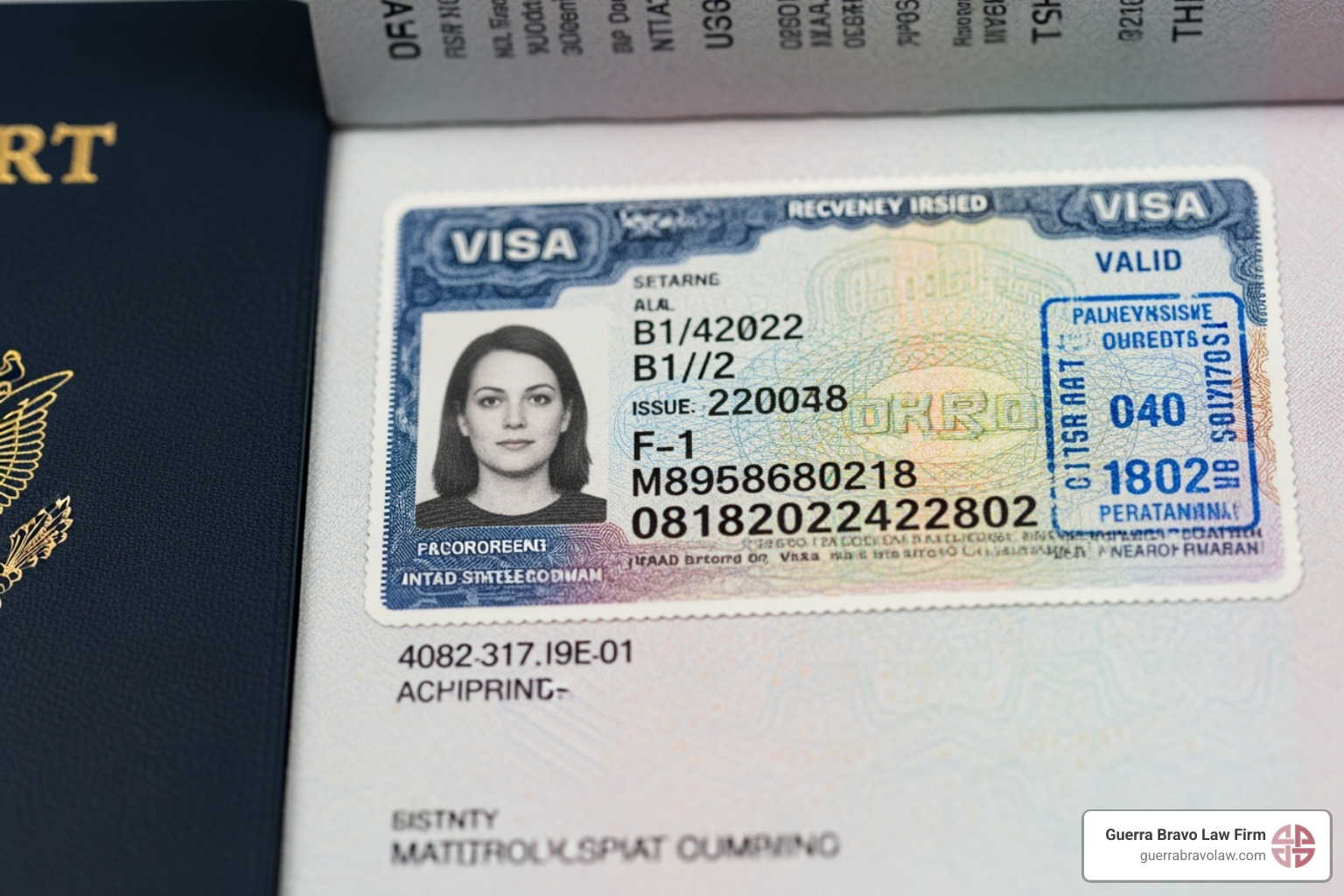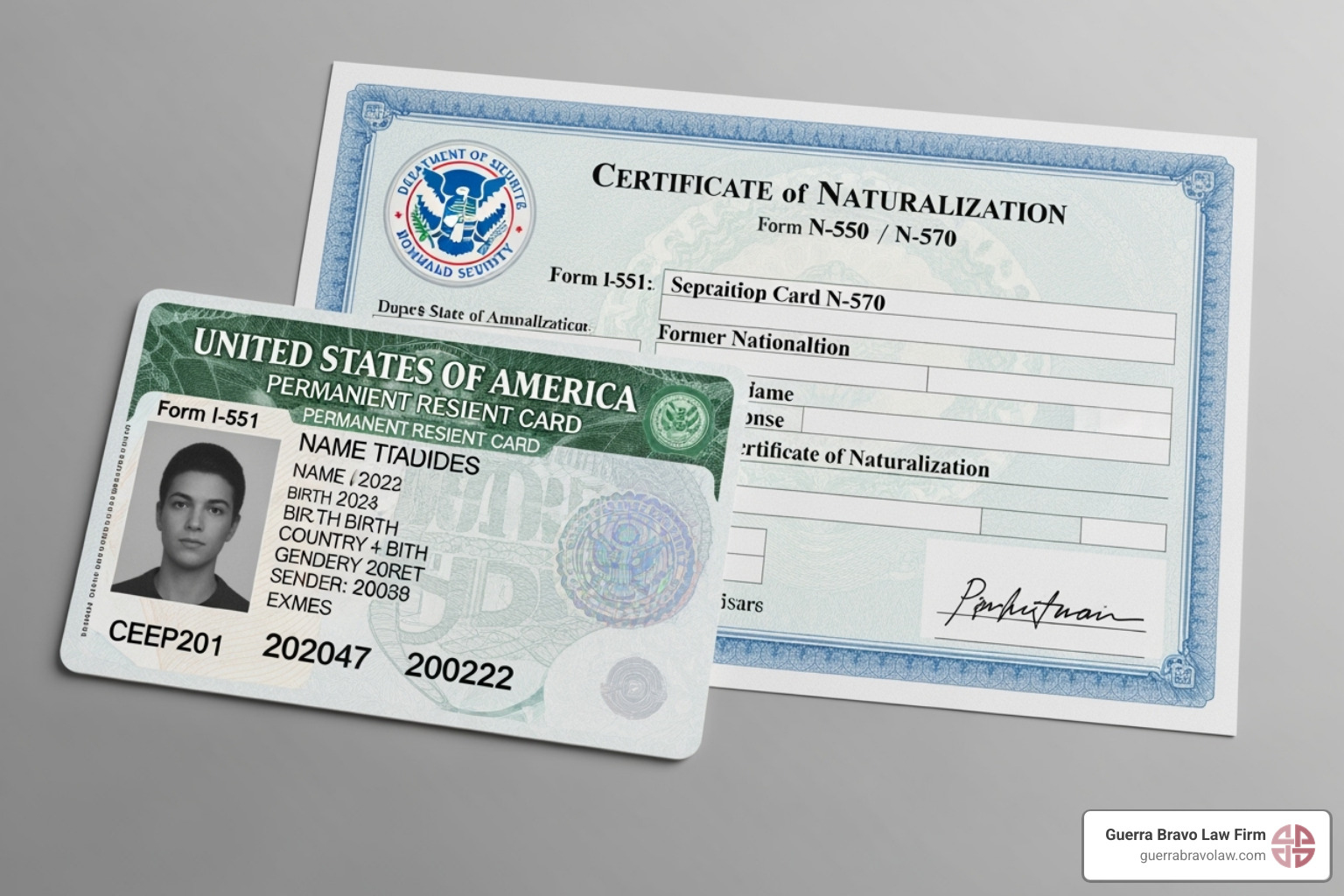
The American Dream: Navigating US Immigration Policy
Understanding the Foundation of American Immigration
US immigration law is the complex framework governing who can enter, live, and work in the United States. This system is built on four fundamental principles that have shaped America's approach to immigration for decades.
The Four Pillars of US Immigration Law:
Family Reunification: Keeping families together with unlimited visas for immediate relatives of U.S. citizens.
Economic Skills: Admitting immigrants with valuable skills, with 140,000 employment-based visas available annually.
Humanitarian Protection: Providing refuge for those fleeing persecution, with a refugee ceiling of 125,000 for FY 2022-2024.
Diversity Promotion: Encouraging immigration from underrepresented countries through 55,000 diversity visas each year.
The Immigration and Nationality Act (INA) is the cornerstone of this system, allowing up to 675,000 permanent immigrant visas annually, plus unlimited visas for the immediate relatives of U.S. citizens. Navigating this maze of forms, deadlines, and legal requirements is critical, as it can dramatically impact your future and your path to the American Dream.
The Foundations of US Immigration Law
US immigration law is a complex legal framework shaped by decades of policy decisions, historical events, and core American values. The system is built on four key pillars: family reunification, contributing economic skills, offering humanitarian protection, and promoting diversity. These principles are woven into the laws that determine who can make America their home.

The Immigration and Nationality Act (INA)
The Immigration and Nationality Act (INA), passed in 1952, is the primary statute governing U.S. immigration and citizenship. Codified in Title 8 of the U.S. Code, the INA has been amended many times to meet the nation's changing needs.
Crucially, the INA sets the annual limit of 675,000 permanent immigrant visas across various categories. However, it places no limit on visas for immediate relatives of U.S. citizens, prioritizing family unity. For more details, USCIS provides comprehensive information on The Immigration and Nationality Act (INA).
A Brief History of U.S. Immigration Legislation
U.S. immigration laws have evolved significantly over time. Early policies were relatively open, but this changed with laws like the Immigration Act of 1924. This act established a national origins quota system that severely restricted immigration, favoring Northern and Western Europeans and completely excluding immigrants from Asia.
This discriminatory system was dismantled by the Hart-Celler Act of 1965. This landmark legislation abolished the quota system and established the foundation of the modern immigration system, which prioritizes family reunification and valuable job skills. This shift from exclusion to a more inclusive, family-focused policy is a defining feature of current law. The Migration Policy Institute offers a timeline of Major U.S. Immigration Laws, 1790 - Present.
Pathways to America: Immigrant and Non-Immigrant Visas
The path to the U.S. depends on whether you seek permanent residence or temporary entry. This choice determines your visa pathway.
Immigrant visas are for those intending to live permanently in the U.S., leading to Lawful Permanent Resident status (a "Green Card").
Non-immigrant visas are for temporary stays for specific purposes like tourism, study, or work.

Family-Based Immigration
Family reunification is a cornerstone of US immigration law. U.S. citizens and lawful permanent residents can sponsor relatives for permanent residency.
Immediate Relatives of U.S. Citizens: Spouses, unmarried children under 21, and parents of citizens have no annual visa limits, reflecting the high priority placed on these relationships. In Fiscal Year 2022, family-based immigrants made up 58% of all new permanent residents.
Family Preference Categories: Other family members, such as adult children and siblings of citizens, and spouses and children of permanent residents, can be sponsored through categories with annual visa limits, which may involve waiting periods.
Guerra Bravo Law Firm helps families steer this process. Learn more about our assistance with Family Petitions.
Employment-Based Immigration
The U.S. welcomes skilled workers who contribute to the economy. Each year, 140,000 employment-based immigrant visas are available across five preference categories. In FY 2022, this pathway accounted for 26.5% of all new permanent residents.
EB-1: Priority workers with extraordinary ability.
EB-2: Professionals with advanced degrees or exceptional ability.
EB-3: Skilled workers, professionals, and other workers.
EB-4: Special immigrants, such as religious workers.
EB-5: Immigrant investors who create U.S. jobs.
Most categories require employer sponsorship and a labor certification process. Our firm has extensive experience with Employment Petitions.
The Diversity Visa Lottery
The Diversity Visa program offers 55,000 visas annually through a lottery. It is designed for individuals from countries with historically low rates of immigration to the U.S. Applicants need a high school education or qualifying work experience. Selection gives you the chance to apply for a Green Card.
Understanding Per-Country Ceilings
To promote diversity, US immigration law limits any single country to 7 percent of the total annual immigrant visas. While fair in principle, this creates long backlogs for high-demand countries like China, India, Mexico, and the Philippines.
Temporary (Non-Immigrant) Visas
Numerous temporary visas are available for specific, limited-duration purposes. All non-immigrant visas require you to demonstrate intent to return to your home country. Common types include:
B-1/B-2: For business or tourism.
F-1: For academic students.
H-1B: For specialty occupation workers.
L-1: For intracompany transferees.
O-1: For individuals with extraordinary ability.
While temporary, these visas can provide valuable experience and may sometimes lead to a future immigrant pathway.
The Journey to Citizenship and Permanent Residency
Becoming a Lawful Permanent Resident (LPR) or a U.S. citizen is a major life goal. An LPR, or "Green Card" holder, can live and work permanently in the U.S. Citizenship grants the full rights of participation in American society, including voting and holding a U.S. passport.

Obtaining a Green Card (Lawful Permanent Residency)
A Green Card can be obtained through family, employment, humanitarian programs, or the Diversity Visa Lottery. Once eligible, you will follow one of two processing paths:
Adjustment of Status: For applicants already in the U.S. who meet certain criteria. You file Form I-485 with USCIS and complete the process, including a medical exam, biometrics, and an interview, without leaving the country.
Consular Processing: For applicants outside the U.S. After your petition is approved, the National Visa Center (NVC) coordinates with a U.S. embassy or consulate in your home country for your visa interview.
Both paths require careful documentation. For example, in marriage-based cases, you must provide substantial proof of a bona fide relationship.
Becoming a U.S. Citizen Through Naturalization
Naturalization is the process for an LPR to become a U.S. citizen. Key requirements include:
Being at least 18 years old.
Holding LPR status for five years (or three years if married to a U.S. citizen).
Meeting continuous residence and physical presence requirements.
Demonstrating good moral character.
Passing English and civics tests.
The process starts with filing Form N-400, Application for Naturalization. After a biometrics appointment and a successful interview, the final step is taking the Oath of Allegiance at a naturalization ceremony. Proper preparation is key. Learn more about our help with US Citizenship Claims and review our guide on What to Bring for Naturalization Interview.
Humanitarian Relief and Special Immigration Programs
US immigration law includes provisions that reflect America's humanitarian commitment to protecting vulnerable people. These programs offer refuge from persecution and temporary relief during extraordinary crises.

Asylum Seekers and Refugees
The U.S. protects those with a well-founded fear of persecution based on race, religion, nationality, political opinion, or membership in a particular social group.
Refugees apply for protection from outside the U.S. and are resettled through the U.S. Refugee Admissions Program. The admission ceiling was set at 125,000 for fiscal years 2022-2024.
Asylum seekers apply for protection while already in the U.S. or at a port of entry. They must generally apply within one year of arrival. In fiscal year 2022, 36,615 individuals were granted asylum.
Both require significant evidence to prove their claim.
DACA (Deferred Action for Childhood Arrivals)
DACA provides temporary protection from deportation and work authorization to eligible young people brought to the U.S. as children. It does not grant permanent legal status or a path to citizenship. Key eligibility criteria include arriving before age 16, continuous residence since June 15, 2007, and meeting educational and criminal background requirements. The program's future is uncertain due to ongoing legal challenges, highlighting the need for a permanent legislative solution. You can learn more about advocacy efforts to Stand with Immigrant Youth.
Current Challenges in US immigration law
The U.S. immigration system faces several significant challenges:
Border Management: Complexities at the southern border, including large numbers of asylum seekers, pose ongoing humanitarian and logistical challenges.
Processing Backlogs: Severe delays across all visa and benefit categories affect families, employers, and humanitarian applicants, with wait times stretching for years.
Legislative Gridlock: Congress has struggled to pass comprehensive immigration reform, leaving key issues like border security, pathways to citizenship, and worker programs unresolved.
Economic Impacts: Immigration policy has profound effects on the U.S. economy, influencing labor force growth, entrepreneurship, and innovation.
To understand these impacts in your area, the American Immigration Council provides a tool to explore immigration data where you live.
Understanding Immigration Violations and Removal Defense
Violating US immigration law, even unintentionally, can have severe, life-changing consequences. Understanding what constitutes a violation and how the removal (deportation) process works is essential for protecting your future in the U.S.
The Removal Process: A Step-by-Step Overview
Notice to Appear (NTA): The government initiates removal proceedings by issuing an NTA, a document ordering you to appear before an immigration judge.
Master Calendar Hearing: This is your first, brief court appearance where the judge reviews the charges and schedules your case.
Individual Hearing: This is your trial. You present evidence and testimony to argue why you should be allowed to stay in the U.S.
Judge's Decision: The immigration judge issues a ruling on your case.
Relief from Removal: Even if found removable, you may be eligible for relief, such as asylum or Cancellation of Removal, that could prevent your deportation.
Appeal: An unfavorable decision can often be appealed to a higher court.
Implications of Immigration Violations
An immigration violation occurs when you fail to follow the terms of your visa or U.S. law. Common violations include:
Unlawful Presence: Staying beyond your authorized period of stay. Accumulating over 180 days can trigger a 3- or 10-year bar to re-entry.
Unauthorized Employment: Working without the proper authorization is a serious violation that can jeopardize your current and future immigration status.
Criminal Convictions: Certain crimes can make you "inadmissible" (ineligible to enter or get a green card) or "deportable" (subject to removal). Understanding What Crimes Are Eligible for Deportation? is critical.
The Critical Role of Removal Defense
Facing deportation is overwhelming, with the risk of being separated from family and community. A strong legal defense is critical. An experienced attorney can identify all possible forms of relief, such as:
Cancellation of Removal: A defense for certain long-term residents who can prove their removal would cause "exceptional and extremely unusual hardship" to qualifying U.S. citizen or LPR family members.
Waivers: A request for the government to "forgive" a ground of inadmissibility or deportability based on hardship to family.
Adjustment of Status: In some cases, it's possible to apply for a Green Card even while in removal proceedings.
Navigating immigration court requires deep legal knowledge. Our firm has extensive experience fighting deportation. Learn more about our approach on our Removal Defense page.
Frequently Asked Questions About U.S. Immigration
Navigating US immigration law raises many questions. Here are answers to some of the most common ones we hear.
What is the difference between an immigrant and a non-immigrant visa?
The key difference is intent.
An immigrant visa is for individuals who intend to live permanently in the United States. This path leads to a Green Card (Lawful Permanent Residency).
A non-immigrant visa is for a temporary stay for a specific purpose, such as tourism (B-2), study (F-1), or temporary work (H-1B). The holder is expected to return to their home country.
While it's possible to transition from a non-immigrant to an immigrant status (e.g., marrying a U.S. citizen), your original intent upon entry must have been temporary.
How long does it take to become a U.S. citizen?
The timeline varies. First, you must be a Lawful Permanent Resident (Green Card holder). The required residency period is typically:
Five years for most LPRs.
Three years if you have been married to and living with a U.S. citizen for that time.
After meeting the residency and other requirements, you can file Form N-400 to apply for naturalization. Processing times for the application, interview, and oath ceremony can take several months to over a year, depending on the USCIS office.
Can I work in the U.S. on a tourist visa?
No. A tourist visa (B-2) is strictly for pleasure, tourism, or medical treatment. Working in the U.S. on a tourist visa is considered "unauthorized employment" and is a serious violation of US immigration law.
Getting caught can lead to deportation and a bar on returning to the U.S. for many years. To work legally, you must first obtain a proper work-authorized visa, such as an H-1B, L-1, or O-1 visa. Always pursue the correct legal pathway for employment.
Conclusion: Charting Your Course with Expert Guidance
Navigating US immigration law is a complex journey. From its foundational principles to the specific pathways for families, workers, and refugees, the system is filled with intricate rules and frequent policy changes. A single misstep can jeopardize your entire case.
This is not a path to walk alone. The stakes are too high, and the laws are too nuanced for anyone but an experienced professional to handle effectively.
Why Expert Guidance on US immigration law is Crucial
At Guerra Bravo Law Firm, we offer more than just legal advice; we provide strategy born from experience. Attorney Iris Guerra Bravo's more than 14 years of insider experience with ICE and DHS gives our firm a unique, battle-tested perspective. We understand how government agencies operate, allowing us to anticipate challenges and build effective cases.
We serve clients throughout the Rio Grande Valley, including McAllen, Brownsville, Edinburg, Harlingen, and surrounding communities. Whether you are pursuing a visa, fighting removal, or seeking citizenship, we are here to guide you. The American Dream is within reach, and we can help you achieve it.
Don't face the complexities of US immigration law alone. If you need assistance with an immigration matter, including issues like worksite enforcement, we are ready to help. Contact Us for worksite enforcement help or any other immigration challenge today.


